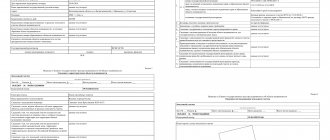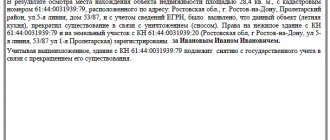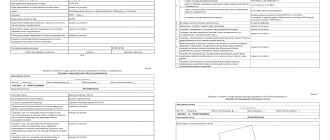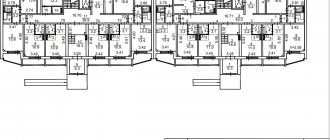Documents include a building permit, a town planning plan for a land plot, and design documentation. The process of completing and obtaining a facility commissioning certificate can be divided into several stages.
Stage one.
The contractor who carried out the construction, reconstruction, or major repair work sends a written notification to the customer. An act of completed work is attached to it, which indicates the types of work performed, data of responsible persons, and copies of the relevant licenses. In addition, a package of documents is attached to the notification and the act. It includes a detailed list of organizations that participated in the process of construction and installation of communications. Working drawings of the building must be attached, with notes indicating changes made.
Technical documentation is also required to confirm the quality of the products and materials used in the work. In addition, a technical passport for the equipment, acceptance certificates for individual works, production and field supervision logs, documents for geodetic surveys, etc. are attached.
Stage two.
The facility is inspected for acceptance into operation. For these purposes, a working commission is being created. It includes the customer or his representative working by proxy. Mandatory participation of representatives of the design organization, operation services, government supervision services (SES, firefighters, etc.). The commission’s task is to check the quantity and accuracy of documentation and assess compliance with the requirements of the building structure design. It is possible to perform a test run of equipment and check the operation of engineering systems. In case of a satisfactory outcome of the inspection, a conclusion is drawn up on the readiness of the building for acceptance into operation.
If during the process structural defects, deviations from building standards and design documentation are identified, a conclusion will be drawn up that the building is not fully ready for acceptance into operation. It will include a list of descriptions of defects and inconsistencies that need to be eliminated.
Checking the readiness of the building for acceptance into operation is paid by the customer.
Stage three.
An application for permission to put the facility into operation is submitted to the Main Directorate of Architecture. A number of documents are attached to it. These are papers establishing the right to a land plot, a plan for this plot, and a building permit. Documentation is also required that confirms the compliance of the object’s parameters with design standards.
It is signed by the person who carried out the construction. Be sure to attach documents confirming the facility’s compliance with technical specifications, certified by representatives of operating organizations. In addition, the package of documents must include a diagram showing the location of the object and its communications on the land plot, as well as the planning organization of the site. From the moment of submitting the application, a check will be carried out within ten days to verify the correctness of the documents and their completeness. A site inspection will also be organized. Based on its results, a decision will be made to issue a permit to put the facility into operation, or to deny such a permit.
Stage four.
The acceptance committee conducts a comprehensive inspection of the facility. In order to receive an act from the commission on the commissioning of the facility, you need to submit the same set of documents that were considered by the working commission, and attach to it a positive conclusion of the working commission, as well as permission to commission the facility. The legislation clearly states that it is prohibited to operate the facility without a positive decision from the acceptance committee. The commission will study the documentation provided. If there are no complaints, an act of acceptance of the non-residential property will be drawn up. Within seven days from the moment it is signed by the commission members, it must be approved by the head of the architectural department. The date of approval of this act will be considered the date of official commissioning of the facility.
Commissioning certificate (buildings)
The act itself is a document drawn up on the appropriate government form. In the upper right part of the paper there is a field “I approve”, in which the head of the architecture board must sign. The body of the document includes the date of the inspection, the composition of the commission, and the name of the object. At the bottom there are columns for signatures of commission members.
The composition of the acceptance committee and the distribution of responsibilities between its participants are determined by the head of the committee. By putting their signatures on the acceptance certificate, members of the commission bear personal responsibility for their decisions in accordance with the distribution of responsibilities and competence. If one of the participants in the commission’s work refuses to sign the act, he must give reasons for his refusal. To do this, he is obliged to submit to the head of the commission the conclusion of the state body of which he is a representative, which will contain comments. They must fall within the competence of this body. In this case, the commission sets a certain period for eliminating the comments. If the comments are not removed after this period, the facility will be considered unprepared for operation. If the commission refuses to issue an act of acceptance of the building into operation, it must provide the customer with a reasoned conclusion within the prescribed period. If the customer does not agree with the results of the commission’s work, he has the right to challenge it in court.
The commission may be reappointed if the comments on the conclusion are eliminated by the construction customer. The legislation does not limit the number of acceptance committees.
The fact of completion of the activity and the need to put the result into operation is confirmed by the act. Its sample can be downloaded for free on the page.
The fact of completion of any activity and the need to put the result into operation is confirmed by a document called an act. Water meters, fixed assets, capital construction projects, various equipment, electrical installations and other objects of the material world, before use, require the creation of a commissioning certificate
. On this page we will take a closer look at the main components of this document and provide the opportunity for free.
Typically, the inclusion of such legal documents is provided for by government agencies. Each structural unit develops its own form, example, and template. Commissioning must be done exclusively in writing. Quite often, regulations are signed by several people at once, if there is a procedure for collective decision-making on putting the facility into operation. If any participant refuses to sign the document, he must provide a written explanation describing the reasons for the refusal of approval.
Mandatory points of the commissioning certificate
:
- Approval mark from the head of the commission in the upper right corner;
- Name, place, time of the act;
- Listing of persons involved in the consideration of the material, entering the accompanying legal framework, previous grounds;
- Items of activities carried out for commissioning and inspection of the facility;
- Comments, suggestions, objections;
- Conclusions, fixation of methodological content regulations;
- Signatures and transcripts of each commission member.
Anyone wishing to receive the coveted commissioning paper should carefully approach each stage of the process.
The slightest shortcomings in work directly affect the decisions of government authorities. Before spending money, you need to carefully consider the steps. Stopping the commission check will result in new requests with the same requirements. Collecting information, documentation, endlessly going through authorities will force the subject to endure the same costs. The act of commissioning an object, equipment, building or any other fixed asset is the most important document confirming the organization’s acceptance of the acquired, constructed or reconstructed fixed asset.
The preparation of this document is preceded by quite a lot of work, in which numerous services and specialists are involved, both from the organization that accepts the OS into operation, and from the contractor or seller.
Facility commissioning certificate: sample
Today there is no form of OS commissioning act that would be mandatory for use. However, for ease of accounting, the vast majority of organizations use forms that were previously approved by the State Statistics Committee of the Russian Federation. The commissioning certificate can be completed using the following standardized forms:
- No. OS-1 - Certificate of acceptance and transfer of fixed assets
- No. OS-1a - Certificate of acceptance and transfer of building (structure)
- No. OS-1b - Certificate of acceptance and transfer of a group of OS objects
The OS commissioning certificate in form No. OS-1 looks like this:
This is a rather voluminous document, compiled on three sheets. This form can be downloaded from our website.
Registration of the commissioning certificate
In order to formalize the commissioning of equipment or draw up a certificate of commissioning of a building, you will need to carry out complex preparatory work:
- Receive a written notification from the contractor (seller) with a certificate of completion of work attached to it. This also includes all technical documentation for the OS object.
- Inspect the facility before it is accepted for use. The implementation of this work is entrusted to a specially created working commission, which includes representatives of all parties. At this stage, documentation is checked and the condition of the object is assessed. If necessary, a conclusion is drawn up indicating that the OS is not ready for acceptance.
- Draw up and submit to the architectural department an application for permission to put the OS (building) into operation.
- Conduct a comprehensive inspection of the facility by the acceptance committee, which draws up an acceptance certificate, and issue an order for the commissioning of the equipment (facility).
Over the past years, the Town Planning Code has undergone significant changes, and therefore completely different documents are required to put a property into operation.
The issuance of permits to put a facility into operation is carried out by the federal executive body, which in turn is guided by government regulations. They also regulate the issuance of the required documents relating to capital construction. There are also specialized government agencies that draw up project documentation and carry out the necessary checks for approval.
It is important to take into account that the act of commissioning a capital construction property, building and premises is issued by the same institution from which the permit for construction work was previously received. The procedure itself, when carried out sequentially, takes no more than ten days. This period includes consideration of the application and the documents attached to it, carrying out verification work and issuing a permitting act.
Save your time and nerves. and within 5 minutes receive a free consultation
professional lawyer.
Who fills it out and when?
Act No. 11 is drawn up when carrying out housing and civil construction, reconstruction, and technical re-equipment of buildings, structures, and complexes. The document is signed only if the construction project is completely ready. The certificate form KS-11 is not used for major repairs or ongoing work. For completion, acceptance and calculations for major and current repairs, act KS-2 from Goskomstat Resolution No. 100 of November 11, 1999 is used.
The performer (contractor) assumes responsibility for the preparation. The customer studies the act, checks it with the design documentation and accepts the completed contract. In addition, the form of the KS-11 act with attachments is the basis for payment by the customer for construction, reconstruction or technical re-equipment.
For the contractor, the act serves as a source for filling out statistical reports on the implementation of construction work and obligations under the contract. The contractor reflects the fact of commissioning in the reporting period when he technically completed the construction of the facility. The customer, in turn, reports to the higher municipal executive authority, providing an activation document on the commissioning of the facility, signed by both parties.
When and in what form?
The question often arises as to when it is necessary to prepare the required documents regarding the commissioning of a real estate property. The answer in this case will be the peculiarity of the capital construction building or the required premises. The order of registration is directly based on whether the object is completely completed and ready for its intended use. For example, receiving an act of putting a residential building into use will mean that you can already move into the house.
In addition, the act can serve as an annex to contracts for the supply or provision of any specified service. The content of documents, including acts, varies depending on the characteristics of real estate, capital construction, engineering condition and intended purpose. Otherwise, the act has a unified form.
There are three forms of this document, and each has a separate form.
Main forms of acts:
- Acceptance and transfer of the main property;
- Reception and handover of the building;
- Reception and transfer of a group of immovable buildings.
You should definitely pay attention to the specified date of commissioning of capital construction.
Where is the acceptance certificate for commissioning of a completed construction facility in the KS-14 form used?
The act of acceptance of the facility into operation is drawn up in the KS-14 form, which is also approved by Resolution of the State Statistics Committee No. 71a. It is used as a primary document certifying the inclusion of a building in the fixed assets of certain forms of ownership - state, private.
The main difference between the KS-14 form and KS-11 is that the signing of this document requires the participation of official structures, for example, architectural and construction supervision authorities. If it is not necessary for them to sign the acceptance form, the KS-11 form is usually used. However, the act of commissioning in the KS-14 form can be drawn up by Russian construction organizations and as a matter of business custom.
See also “Main differences between unified forms No. KS-11 and KS-14.”
Read about the nuances of drawing up acts KS-11 and KS-14 in the legal reference system ConsultantPlus. If you do not have access to the K+ system, get a trial online access for free.
Design rules
The state has developed special forms for drawing up and executing the act, which are not difficult to fill out in accordance with the established rules. However, there are some nuances here:
- The act must have three identical copies (for government agencies, for the transferring and for the receiving party);
- Technical documents regarding the current state of the building, an extract from the technical plan, a diagram of the building, etc. must be attached;
- The drawn up act must be approved by the management of the receiving and transferring parties, if we are talking about legal entities.
It should be noted that the column on state registration is required to be filled out only when we are talking about any transactions. If the registration procedure concerns private property, the column can be left blank.
In transactions, the procedure for filling out documents involves indicating the amount of depreciation. And if the property is in shared ownership, that is, it has co-owners, the size of the shares must also be indicated. Everything related to amounts when concluding transactions must be indicated accurately, taking into account the ruble exchange rate, if we are talking about currency payments.
Where is the acceptance certificate for a completed construction facility, form KS-11, used?
The acceptance certificate for a completed construction facility is filled out using form KS-11, which was introduced into the document flow by Decree of the State Statistics Committee of the Russian Federation dated October 30, 1997 No. 71a.
It is used in the process of accepting buildings for industrial or residential purposes of any form of ownership - at the stage when they are built in full accordance with the agreed project or contract. The act is the basis for financial settlements between the customer and the developer. Despite the fact that since 2013 it is not necessary to use unified forms of primary documentation, in practice many regulatory legal acts provide for the execution of the document in question. Thus, the Ministry of Sports of the Russian Federation approved the KS-11 form as an integral document used when signing contracts for the construction of stadiums for the 2021 World Cup in Russia. In particular, in accordance with clause 4.1 section. IV Order of the Ministry of Sports dated November 25, 2014 No. 946/1, the date of fulfillment of the developer’s obligations under the contract coincides with the date when he and the customer signed the KS-11 form.
To learn how cost accounting in construction is organized, read the material “Procedure for accounting costs in construction (nuances).”
Input sequence
The procedure for carrying out capital construction into operation is as follows:
It is worth noting that you should not neglect established legislative norms and violate the regulated procedure, as this is fraught with very serious consequences in the form of fines. For legal entities on particularly large scales. Therefore, it is not recommended to use capital construction projects and other real estate for their intended purpose before permission has been obtained and the corresponding act has been signed.
In addition, we should not forget that in the event of any emergency situations subsequently operating the property before formal permission, this may entail criminal liability.
The information in this article is provided for informational purposes only. We recommend that you contact our lawyer.








